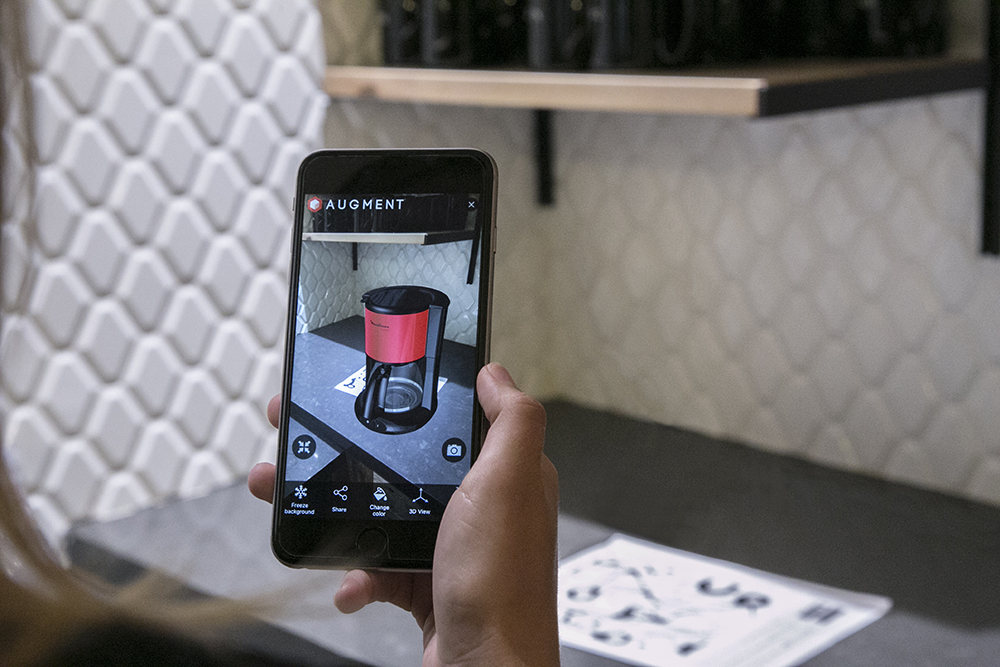NEW YORK – You might have gotten a taste of “augmented reality,” the blending of the virtual and physical worlds, as you chased on-screen monsters at real-world landmarks in last year’s gaming sensation, “Pokemon Go.”
Upcoming augmented reality apps will follow that same principle of superimposing virtual images over real-life settings. That could let you see how furniture will look in your real living room before you buy it, for instance.
While “Pokemon Go” didn’t require special hardware or software, more advanced AR apps will. Google and Apple are both developing technology to enable that. Google’s AR technology is already on Android phones from Lenovo and Asus. On Tuesday, Google announced plans to bring AR to even more phones, including Samsung’s popular S8 and Google’s own Pixel, though it didn’t give a timetable beyond promising an update by the end of the year.
As a result, Apple might pull ahead as it extends AR to all recent iPhones and iPads in a software update expected next month, iOS 11. Hundreds of millions of AR-ready devices will suddenly be in the hands of consumers.
But how many are ready to give AR a try?
Early applications
Of the dozen or so apps demoed recently for Android and iPhones, the ones showing the most promise are furniture apps .
From a catalog or a website, it’s hard to tell whether a sofa or a bed will actually fit in your room. Even if it fits, will it be far enough from other pieces of furniture for someone to walk through?
With AR, you can go to your living room or bedroom and add an item you’re thinking of buying. The phone maps out the dimensions of your room and scales the virtual item automatically; there’s no need to pull out a tape measure. The online furnishing store Wayfair has the WayfairView for Android phones, while Ikea is coming out with one for Apple devices. Wayfair says it’s exploring bringing the app to iPhones and iPads, too.
As for whimsical, Holo for Android lets you pose next to virtual tigers and cartoon characters. For iPhones and iPads, the Food Network will let you add frosting and sprinkles to virtual cupcakes. You can also add balloons and eyes – who does that? – and share creations on social media.
Games and education are also popular categories. On Apple devices, a companion to AMC’s “The Walking Dead” creates zombies alongside real people for you to shoot. On Android, apps being built for classrooms will let students explore the solar system, volcanoes and more.
Beyond virtual reality
Virtual reality is a technology that immerses you in a different world, rather than trying to supplement the real world with virtual images, as AR does. VR was supposed to be the next big thing, but the appeal has been limited outside of games and industrial applications. You need special headsets, which might make you dizzy if you wear one too long.
And VR isn’t very social. Put on the headset, and you shut out everyone else around you. Part of the appeal of “Pokemon Go” was the ability to run into strangers who were also playing. Augmented reality can be a shared experience, as friends look on the phone screen with you.
Being available vs. Being used
While AR shows more promise than VR, there has yet to be a “killer app” that everyone must have, the way smartphones have become essential for navigation and everyday snapshots.
Rather, people will discover AR over time, perhaps a few years. Someone renovating or moving might discover the furniture apps. New parents might discover educational apps. Those people might then go on to discover more AR apps to try out. But just hearing that AR is available might not be enough for someone to check it out.
Consider mobile payments. Most phones now have the capability, but people still tend to pull out plastic when shopping. There’s no doubt more people are using mobile payments and more retailers are accepting them, but it’s far from commonplace.
Expect augmented reality to also take time to take off.

